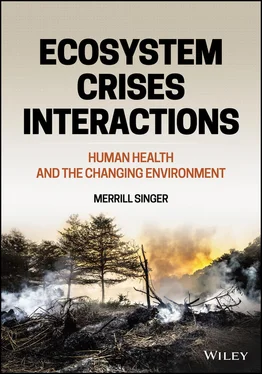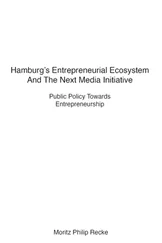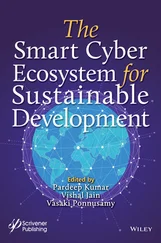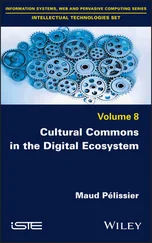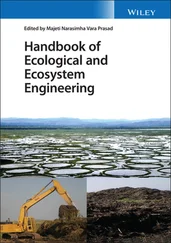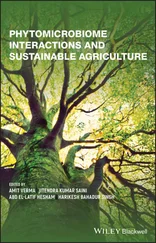58 Lewis, S. (2006). Tropical forests and the changing earth system. Philosophical Transactions B 361(1465): 195–210.
59 Lewis, S. & Maslin, M. (2015). Defining the Anthropocene. Nature 519: 171–180.
60 Listza, A. & Wolbring, G. (2018). EcoHealth and the determinants of health: perspectives of a small subset of Canadian academics in the EcoHealth community. International Journal of Environmental Research in Public Health 15(8): 1688.
61 Littlemore, R. (2006). A letter to Oklahoma Senator James Inhofe. Desmog. https://www.desmogblog.com/a‐letter‐to‐oklahoma‐senator‐james‐inhofe.
62 Lloyd‐Smith, J., George, D., Pepin, K., Pitzer, V., Pulliam, J., Dobson et al. (2009). Epidemic dynamics at the human‐animal interface. Science 326(5958): 1362–1367.
63 Lucas, R., Wheeler, D., & Hettige, H. (1992). Economic development, environmental regulation and the international migration of toxic industrial pollution: 1960–1988. In: P. Low (Ed.), International Trade and the Environment. Discussion Paper No. 159. Washington, D.C.: World Bank.
64 Mertens, F., Mergler, S.‐C., Passos, C. & Lucotte, M. (2005). Network approach for analyzing and promoting equity in participatory ecohealth research. EcoHealth 2(2): 113–126.
65 Meyer, R. (2018). Geology’s timekeepers are feuding. Atlantic. https://www.theatlantic.com/science/archive/2018/07/anthropocene‐holocene‐geology‐drama/565628/.
66 Michel, J., Owens, E., Zengel, S., Graham, A., Nixon, Z., Allard, T. et al. (2013). Extent and degree of shoreline oiling: Deepwater Horizon oil spill, Gulf of Mexico, U.S.A. PLoS ONE 8(6): e65087.
67 Milloy, S. (2015). Freaky‐frog fraud. Fox News. https://www.foxnews.com/story/freaky‐frog‐fraud.
68 Moore, J. (2016). Anthropocene or Capitalocene? Nature, History, and the Crisis of Capitalism. Oakland, CA: PM Press.
69 Morens, D., Folkers, K. & Fauci, A. (2004). The challenge of emerging and re‐emerging infectious diseases. Nature 430(6996): 242–249.
70 MSNBC. (2015). Sen. James Inhofe's “snowball” speech, annotated. No longer available online.
71 NAS. (2010). Hidden Costs of Energy: Unpriced Consequences of Energy Production. Washington, D.C.: National Academies Press.
72 Novacek, M. (2001). The Biodiversity Crisis: Losing What Counts. New York: The New Press.
73 Oreskes, N. (2004). The scientific consensus on climate change. Science 304(5702): 1686.
74 Orwell, G. (1953). Such, Such Were the Joys. New York: Harcourt Brace Jovanovich.
75 Paine, R.T., Tegner, M.J., & Johnson, E.A. (1998). Compounded perturbations yield ecological surprises. Ecosystems 1(6): 535–545.
76 Parkes, M. (2012). Diversity, emergence, resilience: guides for a new generation of ecohealth research and practice. EcoHealth 8(2): 137–139.
77 Perman, R. & Stern, D. (2003). Evidence from panel unit root and cointegration tests that the environmental Kuznets curve does not exist. Australian Journal of Agricultural and Resource Economics 47: 325–347.
78 Ramirez‐Llodra, E., Tyler, P., Baker, M., Bergstad, O., Clark, M. & Escobar, E. (2011). Man and the last great wilderness: human impact on the deep sea. PLoS ONE 6(8): e22588.
79 Rapport, D., Costanza, R. & McMichael, A. (1998). Assessing ecosystem health. Trends in Ecology and Evolution 13(10): 397–402.
80 Rathje, W. & Murphy, C. (2001). Rubbish! The Archaeology of Garbage. Tucson, AZ: University of Arizona Press.
81 Rockefeller Foundation. (2020). Safeguarding Human Health in the Anthropocene Epoch. https://www.rockefellerfoundation.org/report/safeguarding‐human‐health‐anthropocene‐epoch/.
82 Roger, F., Caron, A., Morand, S., Pedrono, M., de Garine‐Wichatitsky, M., Chevalier, V. et al. (2016). One Health and EcoHealth: the same wine in different bottles? Infection Ecology & Epidemiology 6: 30978.
83 Rohr, J. (2018). Atrazine and amphibians: a story of profits, controversy, and animus. In: D. DellaSala & M. Goldstein (Eds.), The Encyclopedia of the Anthropocene, vol. 5, pp. 141–148. Oxford: Elsevier.
84 Singer, M. (2014). Climate change and planetary health. Somatosphere. http://somatosphere.net/2014/climate‐change‐and‐planetary‐health.html/.
85 Singer, M. (2018). Climate Change and Social Inequality: The Health and Social Costs of Global Warming. Abingdon: Routledge.
86 Steffen, W., Sanderson, A., Tyson, P, Jäger, J., Matson, P. & Moore, B. (2005). Global Change and the Earth System: A Planet Under Pressure. Berlin: Springer‐Verlag.
87 Steffen, W., Grinevald, J., Crutzen, P. & McNeill, J. (2011). The Anthropocene: conceptual and historical perspectives. Philosophical Transactions of the Royal Society A 369(1938).
88 Steffen, W., Rockström, J., Richardson, K., Lenton, T., Folke, C., Liverman, D. et al. (2018). Trajectories of the earth system in the Anthropocene. Proceedings of the National Academy of Sciences U.S.A. 115(33): 8252–8259.
89 Stern, D. (2004). The rise and fall of the environmental Kuznets curve. World Development 32(8): 1419–1439.
90 Sulpis, O., Boudreau, B., Mucci, A., Jenkins, C., Trossman, D., Arbic, B. et al. (2018). Current CaCO3 dissolution at the seafloor caused by anthropogenic CO2. Proceedings of the National Academy of Sciences U.S.A. 115(46): 11 700–11 705.
91 Tucker, M., Böhning‐Gaese, K., Fagan, W., Fryxell, J., Van Moorter, B, Alberts, S. et al. (2018). Moving in the Anthropocene: global reductions in terrestrial mammalian movements. Science 359(6374): 466–469.
92 UCL News. (2009). Climate change is the biggest health threat of the 21st century. https://www.ucl.ac.uk/news/2009/may/climate‐change‐biggest‐health‐threat‐21st‐century.
93 U.N. Environment Program. (2019). Our Planet: Healthy Planet, Healthy People. https://www.unenvironment.org/resources/report/our‐planet‐healthy‐planet‐healthy‐people.
94 Van Alstine, J. & Neumayer, E. (2010). The environmental Kuznets curve. In: Gallagher, K. (Ed.), Handbook on Trade and the Environment. Cheltenham: Edward Elgar.
95 Vitousek, P., Mooney, H., Lubchenco, J., & Melillo, J. (1997). Human domination of the Earth's ecosystems. Science 277: 494–499.
96 Waltner‐Toews, D. (2009). Eco‐Health: a primer for veterinarians. Canadian Veterinary Journal 50: 519–521.
97 Warren, J. (2016). One of the most dangerous beats on journalism. Vanity Fair. https://www.vanityfair.com/news/2016/09/one‐of‐the‐most‐dangerous‐beats‐in‐journalism‐revealed.
98 Waters, C., Zalasiewicz, J., Summerhayes, C., Barnosky, A., Poirier, C., Gałuszka, A. et al. (2016). The Anthropocene is functionally and stratigraphically distinct from the Holocene. Science 351(6269): aad2622.
99 Watts, N., Adger, N., Agnolucci, P., Blackstock, J., Byass, P., Cai, W. et al. (2015). Health and Climate Change: Policy Responses to Protect Public Health. http://discovery.ucl.ac.uk/1479102/1/Colbourn_final%20commission%20‐%20word.pdf.
100 Weiss, T. (2013). The Ecological Hoofprint: The Global Burden of Industrial Livestock. London: Zed Books.
101 Whitmee, S., Haines, A., Beyrer, C., Boltz. F., Capon, A., de Souza Dias, B. et al. (2015). Safeguarding human health in the Anthropocene epoch: report of The Rockefeller Foundation–Lancet Commission on planetary health. https://www.rockefellerfoundation.org/wp‐content/uploads/PIIS0140673615609011.pdf.
102 WHO. (2013). Global Action Plan for the Prevention and Control of Non‐communicable Diseases 2013–2020. Geneva: World Health Organization.
103 WHO. (2018). Climate Change and Health. World Health Organization. http://www.who.int/news‐room/fact‐sheets/detail/climate‐change‐and‐health.
104 Wilcox, B., Aguirre, A., Daszak, P. Horwitz, P., Martens, M., Parkes, J. et al. (2004). EcoHealth: a transdisciplinary imperative for a sustainable future. EcoHealth 1(1): 3–5.
Читать дальше
